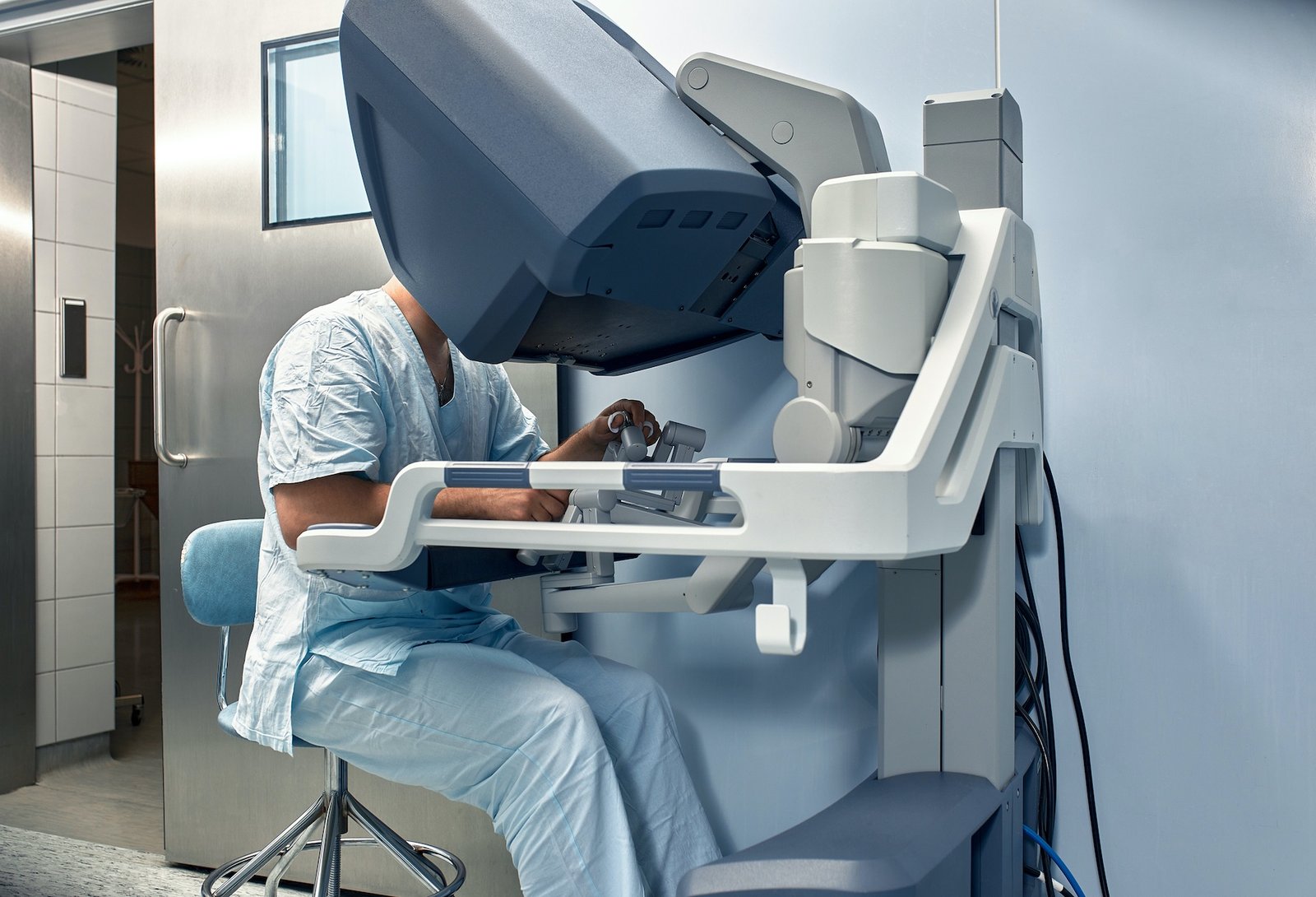
Urological Robotic Surgery
Although the most common use of robotic surgery systems, which have become increasingly important in recent years, is urology, gynecological diseases, general surgery and cardiac surgery are other areas of use. The areas where the robot contributes the most is urological cancer (oncology) surgery. These are the treatment of prostate cancer, bladder cancer and kidney cancer. It is also used in the surgical treatment of adrenal gland diseases and renal outlet stenosis.
How to Apply?
The robot has 4 arms. (1 camera, 3 working staff) Depending on the type of surgery, the surgeon can use 2-3 working arms along with 1 camera. All of these arms are mounted on the patient’s abdomen through 8 mm holes. Camera and working elements can be accessed inside. The surgeon sits at a separate console, controls the robot and performs the operation. Meanwhile, an assistant or specialist doctor assists the surgeon at the bedside, and there is also a nurse who organizes the equipment.
Advantages
3D image and 10 times larger image provides better and more detailed view of possible anatomical structures. This allows for less blood vessel during the surgery and better protection of anatomical structures such as nerves, especially in prostate cancer surgeries, thus resulting in less urinary incontinence and sexual dysfunction (erection) disorders.
The robot provides ease of surgery thanks to its 540-degree mobility and prevention of hand tremors.
Since no large incisions are made as in open surgeries, postoperative pain is less and return to daily activities is faster.
Hospital stays are generally shorter and the need for painkillers is less.
After prostate cancer surgery, catheter withdrawal times are generally faster compared to open surgery.
Since the surgery is performed only with the help of opened holes without making large incisions, it provides a more aesthetically pleasing appearance.
The surgeon performs the surgery sitting at a console, and this can make a positive contribution to the patient by preventing excessive fatigue and stress, allowing the surgery to be performed under easier conditions.
- Electric installation work
- Energy audit
- Installation supervision
- Service maintenance
